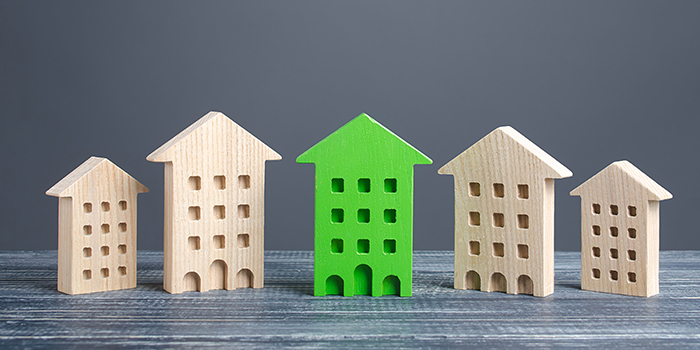
Technology-Led Retrofitting
Globally, consumers are actively seeking out more sustainable products, services and brands, particularly following the COVID-19 pandemic.
A third of UK Brits state that they are more likely to buy from businesses that have strong environmental credentials. The increase in environmental concern is particularly notable among millennials – those now in their 20’s and early 30’s – with 54% stating that they now choose to buy from sustainable businesses.
The demand for sustainability isn’t solely for regularly purchased products. Two-thirds of prospective home buyers now indicate that they’re looking to purchase a more sustainable property.
In fact, 82 per cent of buyers also said that they would be willing to pay more for a sustainable home - and more than one-quarter were willing to pay at least a six per cent premium for such a property.
The retrofitting of properties will play a key role in ensuring that the UK’s housing stock meets our newfound demands.
Unobtrusive, smart building technology represents one of the greatest win-win investments for governments, businesses, social landlords, and individuals.
Smart, IoT technology can help to drive energy efficiency within our homes.
Using sensors, data can be collected on a range of conditions, from temperature and humidity to energy consumption and carbon emissions.
The data gathered can then be delivered directly to residents, social landlords and homeowners to influence behavioural change.
Over time, patterns in data can begin to be built, providing greater insight into potential defaults in the building of our homes or indicating ways in which future property should be built to reduce impact on our planet.
There are a number of ways in which technology can be used to reduce the carbon footprint of our built environment. Smart sensors arguably offer one of the simplest methods, providing property owners with a plug and play solution which requires no integration with existing infrastructure.
It’s expected that by 2030, IoT technology will have saved over eight times that amount of energy it consumes.
By embracing technology, housing providers can see both cost and carbon reductions.
At Invisible Systems, we’re working with several housing associations and social landlords to provide them with a better understanding of the energy usage within their properties.
If you’d like to learn how a smart sensor solution could work for your property portfolio, book a consultation with one of our IoT experts.








